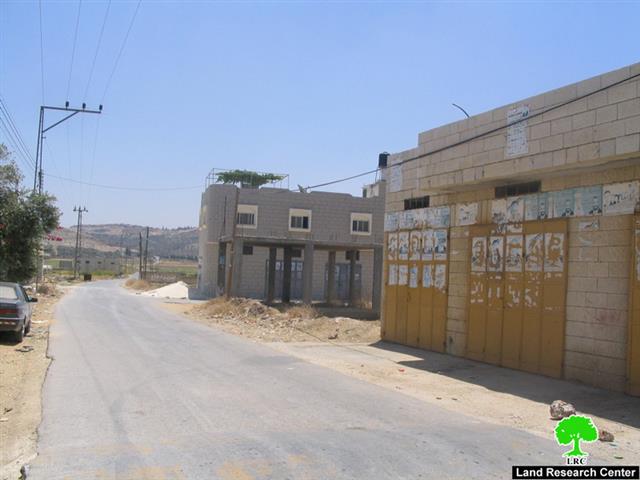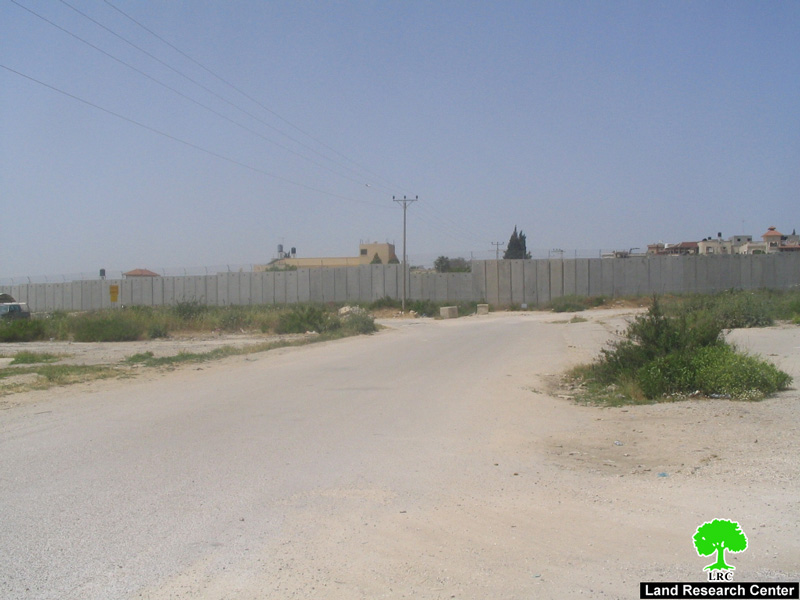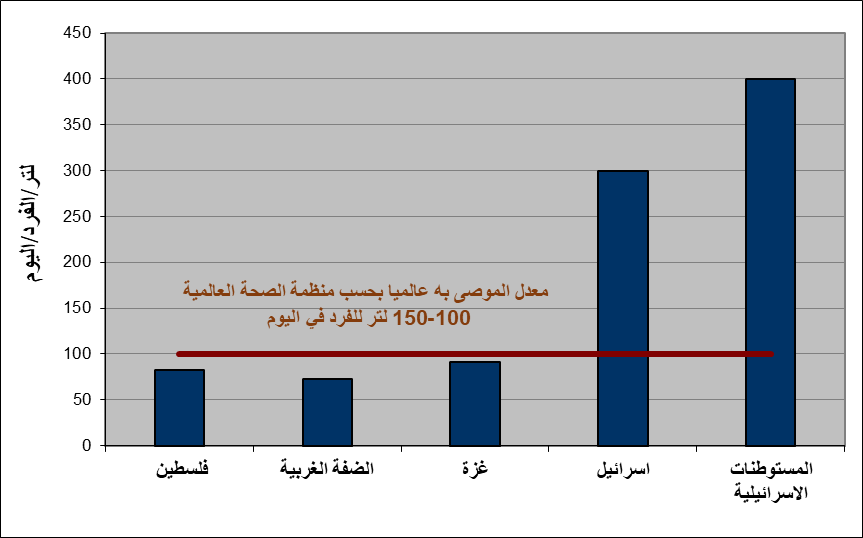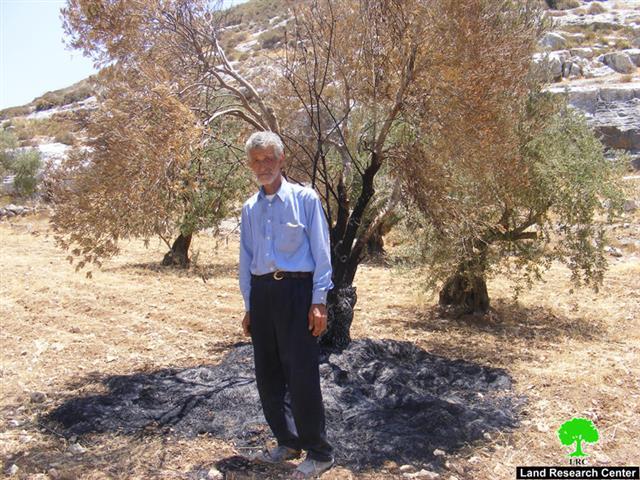The so-called 'Israeli Civil Administration' issued on April 6th, 2008 demolition orders against structures owned by three Palestinians in the village of Nazlet Issa north of Tulkarem Governorate. The orders only gave Palestinian owners a period of three days to try and get permits from the ICA to avoid demolition. The Orders were submitted to the following owners:
|
Name |
Area in m2 |
No. of Structures |
Demolition Order No. |
Type of Structures |
|
200 |
6 |
11422 |
Commercial shops |
|
|
450 |
9 |
11423 |
Commercial shops |
|
|
140 |
1 |
11425 |
Uninhabited finished house |
|
|
Total |
790 |
16 |
|
|
The threatened commercial shops are considered to be the main source of income for tens of Palestinians. The establishment of the Israeli Segregation Wall has led to the closure of tens of commercial shops and, thus, causing tens of Palestinians to become unemployed. Mr. Abdullah Shawareb owns 6 storage shops rented out to an auto mechanic, a carpenter, and an auto electrician in addition to an iron smith. Mr. Shawareb's monthly income from these shops is 500 Jordanian Dinars. As for Mr. Abdel Rahim Shawareb, he owns 9 storage shops that were rented out until the year 2002 for an auto spare parts shop, a sign shop, among other professions. The monthly income for Mr. Shawareb from these shops was 750 Jordanian Dinars.
The construction of the Wall near Nazlat Issa (started in 2002 and finished in 2004) led to the isolation of the village from its neighboring environ especially from the village of Baqa Al Gharbiya, located in lands occupied during the 1948 war. Such isolation caused the closure of a number of shops in the village. Also, a number of structures were given demolition orders in 2002 including the aforementioned structures.
Photo 1: The commercial shops threatened with demolition
Israeli occupation authorities claim that the threatened shops have been built without a permit in an area classified as Area C in addition to its close proximity to the Wall path at a distance less than 60 meters. These structures were given an initial demolition order on December 10th, 2002 which prompted its owners to file a request to gain permits from the Israeli Civil Administration of Beit Il. However, their requests were denied under the pretext that the structures are too close to the Wall path. That was despite the fact that they were built before the establishment of the Wall.
The construction of the Wall in Nazlat Issa has negatively impacted the lives of village residents as well as its economic prosperity; since the establishment of the Wall in 2002, its realignment in 2004 and up to today, Israeli occupation forces destroyed 238 shops in the village. These shops used to provide income for about 1500 Palestinian families scattered throughout the northern parts of the West Bank.
Before the construction of the Wall, Nazlat Issa used to be an important commercial center in which hundreds of merchants and shoppers from the West Bank and inside the 1949 Armistice Line (Green Line) exchange merchandise and money on daily basis. The financial losses caused by the construction of the Wall and the destruction of the shops in the village are estimated at $300,000. Moreover, the Village Council has reported a loss of approximately $12,000 on a monthly basis since the construction of the Wall started.
Israeli Occupation authorities did not stop at that far, but they destroyed 4 houses, 3 of which were two-story houses. A total of 7 families were left homeless due to these demolitions. The total money spent of the building of the 4 houses is estimated to be $450,000. Moreover, the construction of the Wall has led to the isolation of 6 houses behind it, in which 72 Palestinians are living in agony on daily basis while trying to gain access to and from their village through the Israeli manned gate in the Wall.
There are two gates in the Wall surrounding the village; one is an agricultural gate (holding number 457) which opens three times a week while the second gate is used by both Israeli soldiers as well as by Palestinians living inside the isolated area, behind the Wall path. It is worth noting here that the Israeli occupation forces have prevented the residents of the village from building any structures at a distance of less than 200 meters away from the Wall. This prevention has led to the loss of vast areas of lands and the deprivation of the right of natural expansion for the residents of the village.
General Information about Nazlat Issa:
The village of Nazlat Issa is located 18 kilometers north of the city of Tulkarem. The town of Baqa Al Sharqiya borders the village from the east while the village of Baqa Al Gharbiya (located inside the 1948 Borders) forms the western boundary of the village as it is separated from the village only by a 4-meter wide road. The village of Qaffin borders the village from the north and the village of Zeita borders it from the south. See Map 1
In 1948, the village of Nazlat Issa lost over 80,000 to 100,000 dunums of the villages’ lands in addition to two houses and the village’s only school. Only 4,000 dunums were left for Nazlat Issa village, most of which were planted with olive trees. About 800 dunums were designated as a Built Up Area. An additional 300 dunums were devoured by the Israeli Segregation Wall while 1990 olive trees were uprooted during its construction.
Photo 2: A Section of the racial segregation wall on the lands of Nazlat Issa
An estimated 524 dunums were isolated behind the Wall and are planted with 9265 olive trees. Moreover, 6 houses were isolated behind the Wall path while the Israeli occupation forces prevented 350 Palestinian workers from reaching their work places in Baqa Al Gharbiya.
For the worker to work inside the 1949 borders, he would have to travel to the city of Jenin, then to the city of Al Taybeh (occupied in 1948) and then make his way to the town of Baqa Al Gharbiya. The workers have to take this long journey despite the fact that the town of Baqa Al Gharbiya is located less than one kilometer away from their village. In addition, the Wall has negatively impacted the social ties between the village and Baqa Al Gharbiya as 81 Palestinian families from the two communities are currently unable to visit each other due to the presence of the Wall.
Prepared by:
The Land Research Center
LRC
















